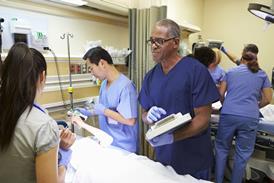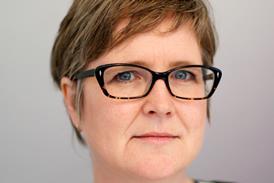For too long we have tended to focus on problems in isolation. To reduce patient harm we need to make changes across cultural, technological and procedural boundaries. It is time we learn from other health systems
We often hear the NHS described as providing “world class” care. But how do we know?
When it comes to comparing health systems, there is not much to go on.
‘When it comes to comparisons, how do we know the NHS is “world class”?’
Reports appear from time to time claiming System X is the best in the world - but the claims depend on what measures are selected.
The US probably tops the global league for providing the most advanced care.
But when its high costs and poor access - now being addressed by the ObamaCare reforms - are included, it slips down the league.
- Titcombe: Transform the culture of fear into a culture of learning
- West: The five trends shaping US healthcare
- See more patient safety news and resources
Go global
It is important that we in the NHS know what is going on elsewhere in the world, so that we can learn from others, share our expertise and keep pace. The Leading Health Systems Network exists for that purpose.
The network was established by the Institute of Global Health Innovation at Imperial College - which I lead - in 2009 and has grown to include 21 organisations in 11 countries across the globe including Brazil, Hong Kong, Australia and Canada.
‘One study found a 40 per cent variation in provision and a three-fold variation in spending’
It exists to share data such as risk factors, disease incidence, outcomes and re-hospitalisations - and compare them in different countries. It is about learning, not competing.
One early study compared angiography rates and costs across five providers and found there was a 40 per cent variation in provision, and a more than three-fold variation in spending.
When the data was released, it attracted eager interest from other specialists. Oncologists in one health system demanded to know why they did not have access to their own analysis, equivalent to the one which was absorbing the cardiology team.
Lifesaver
Now we have begun to look at patient safety. We know around one in 10 patients is harmed while receiving hospital care. The cost of treating health infections in the European Union has been put at €5.4bn. There is a lot at stake.
We have launched a programme to share insights, experience and data on patient safety called the Safer Care Accelerator.
‘The cost of treating health infections in the EU is €5.4bn’
It aims to help healthcare workers and policy makers prioritise initiatives that will improve safety, prevent harm and save lives. It will also, we hope, save cash.
So far 15 healthcare organisations around the world have joined the programme and more are being recruited.
The initial task will be to see what data countries are using to keep patients safe.
- Do they use patient reported data? In hospitals? In primary care?
- Do they have an incident reporting system for staff?
- Do they collect administrative data - for example, on episodes of care?
- What do they do with the data they do collect?
Having assessed what countries do qualitatively, we will then move on to collect quantitative data on numbers of errors reported, costs and outcomes.
These are issues of key importance because health systems could be held legally liable if there is evidence that patient safety is being put at risk.
Too simplistic
There is a key distinction here. The NHS is often criticised for its cancer care - we come well down the European league in terms of survival. Within the NHS, too, hospitals vary in the quality of their care as reflected in local cancer recurrence and survival rates.
We accept however, that hospitals and health systems are doing their best (unless there is evidence, as at Mid Staffs, to the contrary).
They are trying to do well, even though they are not doing as well as others.
With patient safety, it is different. Keeping patients safe - by avoiding errors in diagnosis, treatment or the dispensing of drugs - is a fundamental part of care.
‘For too long the mindset has been that patient harms are inevitable’
When a hospital is found to be at fault in these basic elements, we do not accept a response that says: “We were trying our best.”
We say they are failing and their failure is putting patients at risk. It is negligent and non-negotiable.
For too long the mindset has been that patient harms are inevitable, about which nothing can be done.
We have accepted that silos are natural and that heroism rather than thoughtful design keeps patients safe.
Other industries - notably the airline and motor industries - have effectively managed errors and reduced harm.
But in healthcare we have tended to focus on problems in isolation - one harm at a time - and our efforts have been simplistic and myopic.
If we are to save more lives and significantly reduce patient harm we need to make changes that extend across cultural, technological and procedural boundaries and are based on the evidence of what works.
Sharing international experience will help with this challenging task. It is the only sure way towards safer care.
Lord Darzi is a surgeon and director of the Institute of Global Health Innovation at Imperial College London. He was a Labour health minister from 2007-09



























1 Readers' comment